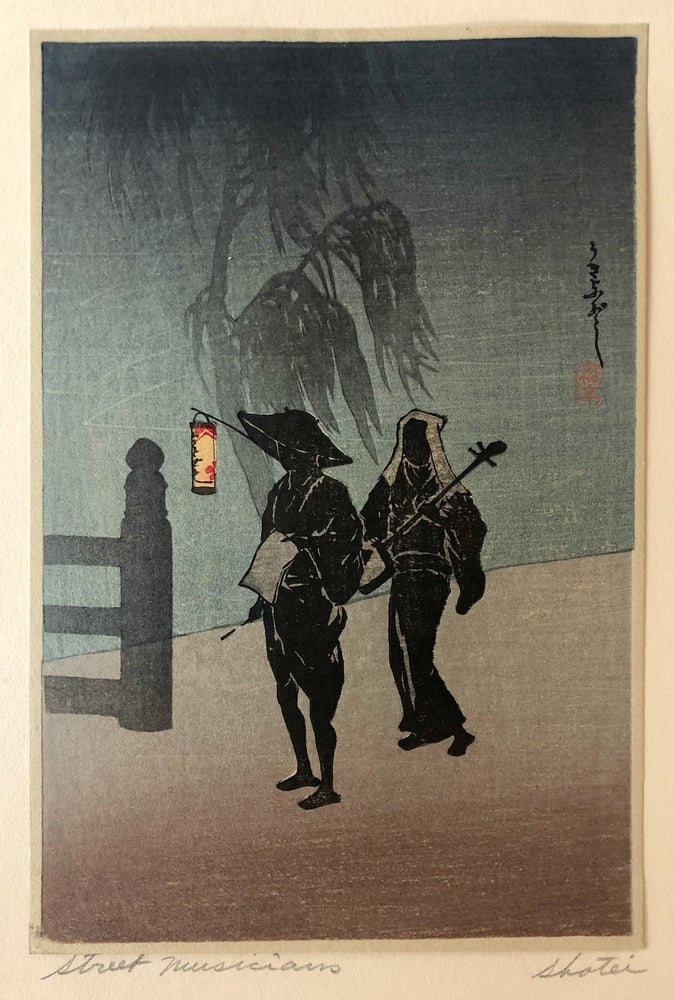
Street Singers (Ukiyobushi); Shamisen Player and Singer
Watanabe Shozaburo, 1936. Woodblock in colors on handmade mulberry paper, Koban 7 3/16 x 4 3/4 inches (182 x 120 mm), full margins. With the Shôtei artist seal in red ink, upper right. Signed "Shotei" and titled in English on the matrix in graphite. With the "Made in Japan" export stamp and the Watanabe catalog number stamp (179), both in blue ink, on the bottom sheet edge, verso, as issued. Adhered to a card stock matrix with deckle edges, as issued. A beautiful pre-war impression of this serene and peaceful scene, good gradient inking and luminosity in the lantern. Printed by hand with cherrywood blocks.
[Marc Kahn, shotei.com, catalog #S-10; Watanabe 179].
Born in Tokyo in 1871, Hiroaki Takahashi was working as an artist in an official capacity at an incredibly young age. After an early apprenticeship with his uncle, Matsumoto Fuko (who awarded the young boy the name Shôtei), Takahashi was hired by the Imperial Household Department of Foreign Affairs to copy designs for ceremonial objects.
By the age of 18, Shôtei was a co-founder of the Japan Youth Painting Society, and by 1907 he had been recruited by Shōzoburō Watanabe to produce prints for his Shin Hanga movement. The Shin Hanga ("New Print") movement served to satisfy the widespread demand in the Western world for the export of traditional Ukiyo-e prints in the style of masters like Hiroshige. Shôtei enjoyed tremendous success in this endeavor, however, it was cut devastatingly short in 1923.
On September 1st of 1923, the Great Kanto Earthquake, also known as the Tokyo-Yokohama earthquake of 1923, struck the Tokyo metropolitan area without warning with a magnitude of 7.9. Up until that point in time it was the worst natural disaster recorded in the history of earthquake-prone Japan. The earthquake, which is said to have lasted up to ten mintues, caused a tsunami, a rotational wind burst with a burning core called a "fire whirl," and extensive firestorms, which quickly spread across the main island of Honshū. Watanabe's facility was reduced to ashes, and the inferno took every single woodblock with it. Lucky to have survived the devastation, Shôtei, now having added the name Hiroaki, spent the rest of his life recreating his lost woodblocks, as well as creating a handful of new designs.
There is some speculation that impressions of woodblocks with the kanja characters reading Shôtei, versus Rakutei, may indicate pre-earthquake impressions versus post-earthquake impressions, printed from a block recreated by the artist after his own design. The signature and title on this work would have been added in English by an assistant in preparation for its export to the West. Despite a persistent bit of misinformation that Shôtei died in the atomic bombing of Hiroshima, he actually died of pneumonia in February of 1945, at the age of 74.
Item number: 525
Price: $350.00
Share: